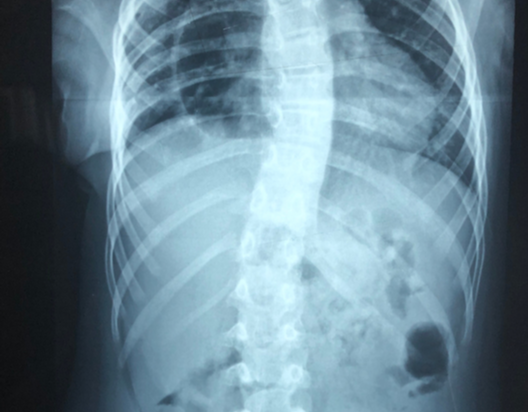Neurofibromatosis type 1 (NF1)

Neurofibromatosis type 1 (NF1) is a genetic condition arising from a gene mutation that causes tumours to grow on nerve tissue. The nerve tumours are usually non-cancerous (benign).
Signs of NF1 usually appear in early childhood. These include flat coffee-coloured skin patches, pea-sized bumps on or under the skin (neurofibromas) and freckles in unusual places such as the armpit, groin or iris (the eye’s coloured part).
NF1 also affects the way the brain develops and children with NF1 often encounter problems with learning, behaviour, and vision. In rare cases, NF1 can cause complications including curvature of the spine, high blood pressure, bone deformities and cancer.
About half of children with NF1 inherit the condition from a parent with NF1. Others will be the first in their family to have it.
Surgery may be needed to remove large or dangerous tumours in children with neurofibromatosis. There is no cure.

Who does it affect?
Who does it affect?
- NF1, or von Recklinghausen disease, affects about one in 3,000 people in Australia. Children with an affected parent have a 50 per cent chance of inheriting the condition.
- Around four in 10 children with NF1 have ADHD, one in four have autism spectrum disorder and over half have learning difficulties such as dyslexia.
- Up to 80 per cent of children with neurofibromatosis have moderate-to-severe impairments in cognition (thinking, learning, remembering).
Our NF1 research
Our NF1 research
We’re conducting research to understand how neurofibromatosis symptoms develop and find ways to improve support for affected children.
Our program aims to describe symptoms and changes from treatment; identify new characteristics in brain imaging that indicate disease; explore how the disease works using cells through ‘disease modelling’ and translate findings into patient trials.
We’re investigating assistive listening devices which emphasise a speaker's voice over background noise in children with NF1 and hearing problems called auditory processing deficits.
We’re leading studies aiming to better understand and identify autistic symptoms, ADHD and learning problems in children with NF1, and to investigate how these developmental problems impact on daily functioning and quality of life.
We’re conducting patient trials to test if the drug trametinib can shrink tumors and reduce the incidence or severity of brain cancer caused by neurofibromatosis.
We’re using advanced brain imaging techniques to better understand how NF1 affects brain development and function.
We’re working on a blood test to diagnose a cancer in NF1 called malignant peripheral nerve sheath tumour by exploring genetic changes that lead to it.
We are investigating whether an ADHD drug can improve ADHD symptoms and other co-occurring developmental complications in children with NF1.
Impacts of our research

Impacts of our research
Our research to understand why autism is common in children with NF1 looks at brain pathways involved in autism development and how autism in children with NF1 compares to children with autism in the general population. We hope this will lead to improved routine checking for autism in young children with NF1, leading to earlier diagnosis and tailored interventions to reduce social and behavioural challenges. A better understanding of this relationship could generate new ideas about autism causes and new autism treatments.
Almost half of children with NF1 have impaired auditory processing, meaning that they have considerable difficulty understanding speech in noisy environments, such as a classroom. Our pivotal trial of a remote microphone listening device should substantially change how we treat the many children with NF1 who experience impaired hearing nationwide and globally. Severe hearing problems disrupt communication and academic progress. This device helps children discriminate a teacher’s voice from background noise, could have immediate benefits at school and may improve academic achievement.
Our vision
Our vision
Our vision is to improve the identification of impairing symptoms in NF1, uncover the mechanisms contributing to these symptoms, and identify personalised treatment strategies to improve the lives of children with NF1.
Where to next?
Where to next?
- To conduct longitudinal studies, following up patients over time, to identify early predictors of autism and other neurodevelopmental problems in children with NF1
- To investigate barriers to diagnosis and intervention for autism and other neurodevelopmental disorders in children with NF1
- To research the mental health burden experienced by individuals with NF1, so that we can advance clinical management of mental health problems in NF1 and improve quality of life
- To use cutting edge stem cell modelling techniques, based on the patient’s own genetic material, to discover how NF1 affects brain development and function and to identify novel drugs and pathways for treatment.






